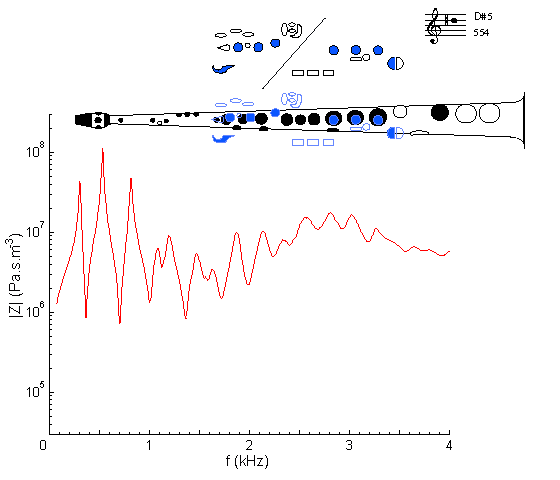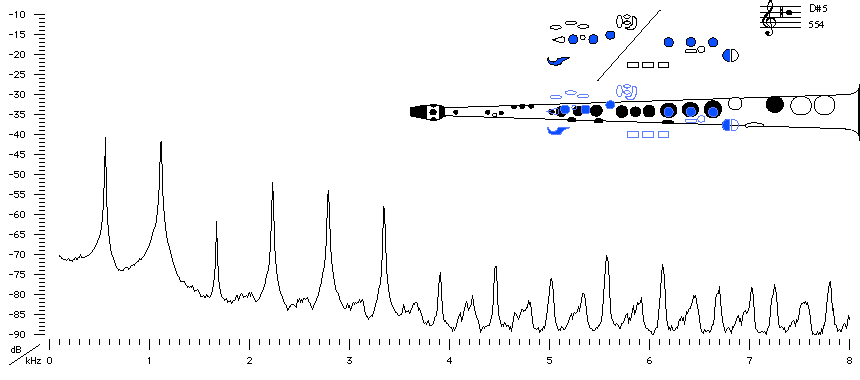| Acoustics of the saxophone |
Bb soprano saxophone |
D#5 |

|
Fingering Acoustic schematic Non-specialist introduction
to acoustic impedance Notes are the written pitch. |
This is the second note in the second register – meaning that it plays at the second peak on the impedance spectrum. It differs from D#4 (the corresponding note in the first register) in that it uses a register hole. This causes a leak in the bore that weakens the first impedance peak, but has little affect on higher peaks – see register hole for an explanation, and compare with D#4, whose impedance spectrum is almost identical except for the first peak. Above about 1 kHz, the curve is irregular: see the discussion in cut-off frequency.
Compare with the impedance spectrum for a tenor sax on written D#5: same fingering but sounding one octave lower.

Sound spectrum
of a Bb soprano saxophone
played using fingering for D#5.
For more explanation, see
Introduction to saxophone acoustics.
This sound spectrum includes transient excitation from the beginning of the note, and so has traces of harmonics from the first impedance peak being excited.
|
Contact:
Joe Wolfe
/ J.Wolfe@unsw.edu.au |